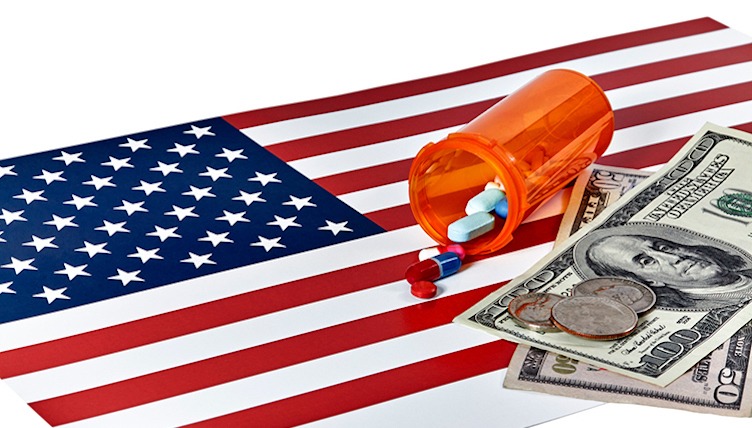US Spending on Medicines Fell in 2016: What’s Projected for 2017?
US spending on prescription medicines fell in 2016 as competition intensified among manufacturers and payers ramped up efforts to limit price increases, according to a recent QuintilesIMS study. So what is the outlook for 2017 and beyond?
Drug spending grew 4.8% in 2016 to $323 billion, less than half the rate of the previous two years, after adjusting for off-invoice discounts and rebates. The surge of innovative medicine introductions paused in 2016, with fewer than half as many new drugs launched than in 2014 and 2015. DCAT Value Chain Insights looks at the numbers and projections for 2017 and beyond.
Inside the US pharmaceutical market
US spending on medicines grew at a slower rate in 2016 compared to 2015, and moderate growth is projected through 2021. Drug spending in the US grew 4.8% in 2016 to $323 billion, less than half the rate of the previous two years, after adjusting for off-invoice discounts and rebates, according to the QuintilesIMS study. While the total use of medicines continued to climb—with total prescriptions dispensed reaching 6.1 billion, up 3.3% over 2015 levels—the spike in new patients being treated for hepatitis C ebbed, which contributed to the decline in spend, according to the QuintilesIMS study. Net price increases—reflecting rebates and other price breaks from manufacturers—averaged 3.5% in 2016, up from 2.5% in 2015. US net total spending is expected to increase 2% to 5% on average through 2021, reaching $375 billion to $405 billion, according to the QuintilesIMS study.
“After a year of heated discussion about the cost and affordability of drugs, the reality is that after adjusting for population and economic growth, total spending on all medicines increased just 1.% annually over the past decade,” said Murray Aitken, senior vice president and executive director of the QuintilesIMS Institute, in commenting on the study. “Understanding how the dynamics of today’s healthcare landscape impact key stakeholders is more important than ever as efforts to pass far-reaching healthcare legislative reforms remain on the political agenda.”
Key to the future growth of the US pharmaceutical market will be new product introductions. The number of innovative medicine introductions slowed in 2016, with fewer than half as many new drugs launched than in 2014 and 2015. In 2016, the US Food and Drug Administration approved 22 new molecular entities (13 small-molecule drugs, seven biologics, and two radioactive diagnostic imaging agents), the lowest total of NME approvals since 2010 when 21 NMEs were approved. From 2011 to 2015, NME approvals had been on an upward trajectory (with the exception of 2013) with 30 NMEs approved in 2011 and 39 in 2012. The exception was in 2013, which had a decline to 27 NMEs, but levels jumped again to 41 NMEs in 2014 and peaked at a recent high of 45 approvals in 2015. New medicines introduced in the past two years continue to drive at least half of total spending growth as clusters of innovative treatments for cancer, autoimmune diseases, HIV, multiple sclerosis, and diabetes become accessible to patients, according to the QuintilesIMS study.
Despite the slowdown in new product approvals in 2016, the prospects for innovative treatments over the next five years are bright, according to the QuintilesIM study, fueled by a robust late-phase pipeline of more than 2,300 novel products that include more than 600 cancer treatments. The QuintilesIMS study projects that the late-phase R&D pipeline will yield an average of 40 to 45 new brand launches per year through 2021. At the end of 2016, the late-phase pipeline included 2,346 novel products, a level similar to 2015, with specialty medicines making up 37% of the total. More than 630 distinct research programs are underway in oncology, which account for one-quarter of the pipeline and where one in four molecules are focused on blood cancers. While the number of new drug approvals and launches fell by more than half in 2016, the size and quality of the late-phase pipeline is expected to drive historically high numbers of new medicines, according to the study.
Several other factors will contribute to US spending on medicines through 2021. Moderating price increases for branded products and the larger impact of patent expiries, will drive net growth in total US spending of 2% to 5% through 2021, reaching $375-405 billion, according to the QuintilesIMS study. Net price increases for protected brands are forecast to average between 2% and 5% over the next five years, even as invoice price growth is expected to moderate to a range of 7% to 10%. This reflects additional pressure and influence by payers on the pricing and prescribing of medicines as well as changes in the mix of branded products on the market. Lower spending on brands following the loss of patent protection is forecast to total $140 billion, including the impact of biosimilar competition, through 2021, according to the QuintilesIMS study.
Inside spending trends
An analysis of patient spending and medicines costs shows lower spending in certain key patient groups but reduced costs for other patient groups. Patients 65 years of age and over have accounted for 41% of total prescription growth since 2011, according to the QuintilesIMS study. While the population of seniors in the US has increased 19% since 2011, their average-per-capita use of medicines declined slightly—from 50 prescriptions per person in 2011 to 49 prescriptions per person in 2016. In the age 50-64 year population, total prescriptions filled increased 21% over the past five years, primarily due to higher per-capita use, which reached 29 prescriptions per person. The largest drivers of prescription growth were in large chronic therapy areas, including hypertension and mental health, while the largest decline was in pain management, according to the study.
On the cost side, average patient out-of-pocket costs continued to decline in 2016, reaching $8.47 compared to $9.66 in 2013, according to the QuintilesIMS study. Nearly 30% of prescriptions filled in 2016 required no patient payment due in part to preventive treatment provisions under the Affordable Care Act, up from 24% in 2013. The use of co-pay assistance coupons by patients covered by commercial plans also contributed to the decline in average out-of-pocket costs and were used to fill 19% of all brand prescriptions last year—compared with 13% in 2013. Those patients filling brand prescriptions while in the deductible phase of their commercial health plan accounted for 14% of prescriptions and 39% of total out-of-pocket costs. Patients in the deductible phases of their health plan abandoned about one in four of their brand prescriptions.






